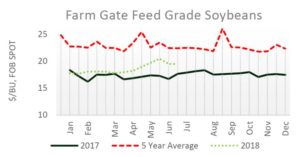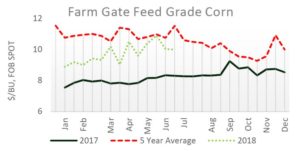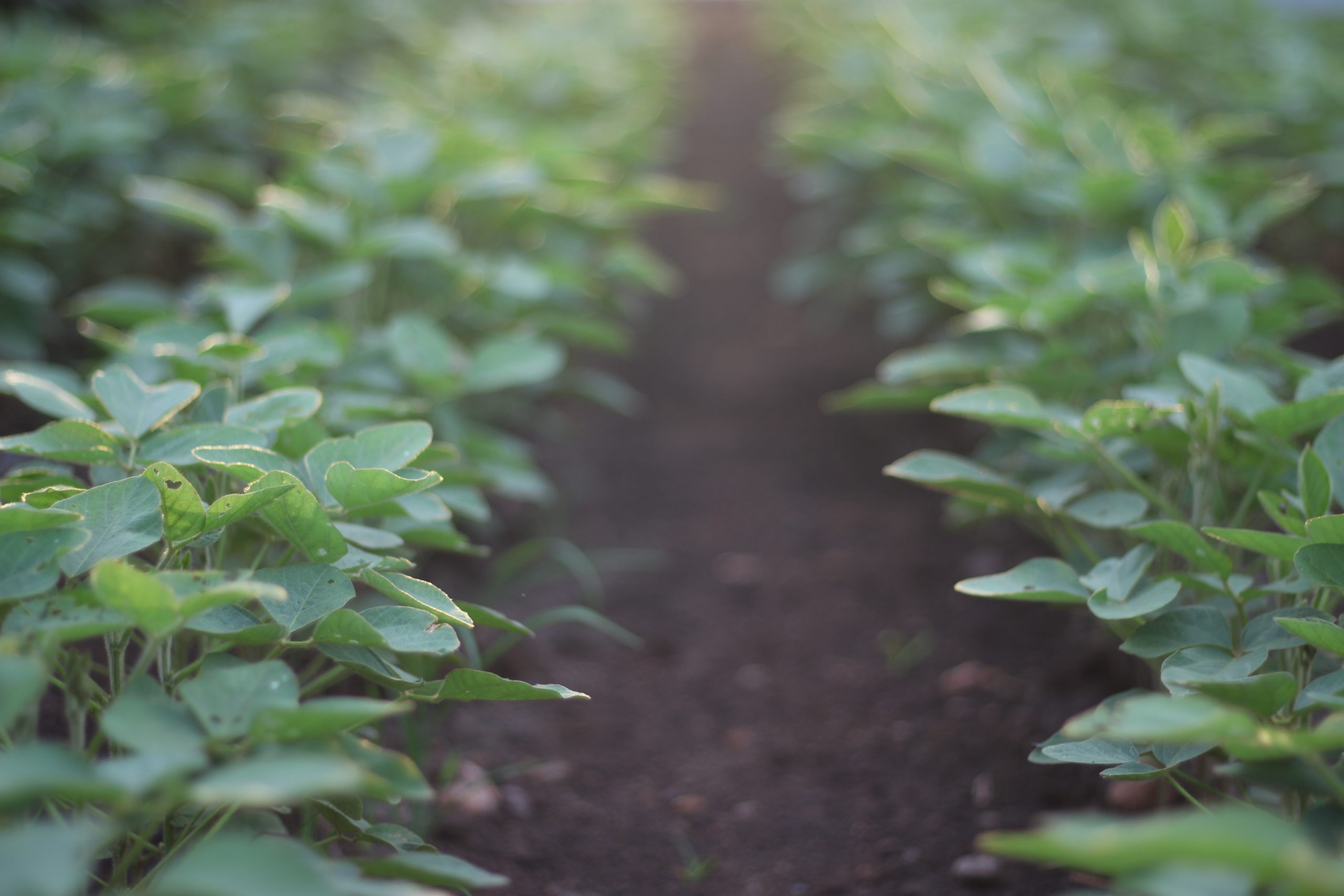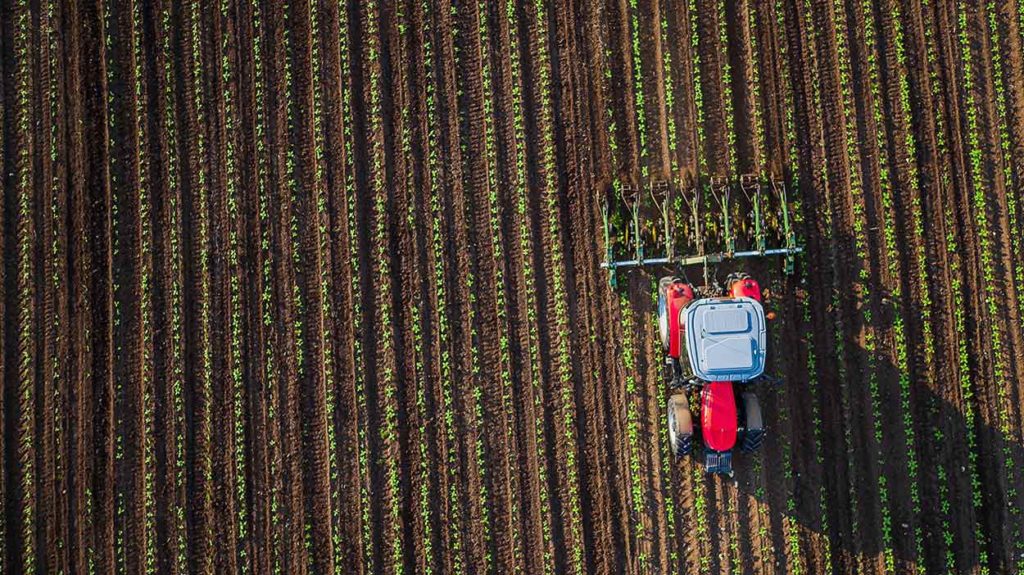- Published On: July 18, 2018
- Author: Steve Sinkula
AgriSecure Field Day on August 10, 2018
AgriSecure is hosting our annual Field Day to share insights and expertise about organic production on August 10th near Omaha, NE. We would love to have you join the AgriSecure Team!
Sessions will include more information on the following:
- Introduction to the transition process, key decision factors, and best practices
- Market update on organic crop prices and contract considerations
- Review the economics of transitioning and producing organic crops
- Overview of organic weed management equipment and techniques
- Crop tour of Rhea Brothers organic corn, organic seed corn, and organic soybean fields, that will feature expert insight on organic production best practices
Agronomy insights
The July 4 holiday is behind us and we are flying through another growing season.
Unfortunately, it has been another year of extreme weather with many of our clients experiencing too much rain, high winds, and/or hail. Such events are important reminders on the importance of having a solid crop insurance plan to protect against the ever changing weather or other unpredictable events. Risk management is critical for your operation and it is never too early to start thinking about what protections you should add to your plan. As always, reach out to an AgriSecure Account Executive to understand your options going forward into the 2019 crop year.
With weather it is always important to understand what potential issues can follow. For most crops, one form of disease or another is directly related to the weather that proceeded the growing cycle. For example, too much rain will mean fungus is likely lurking in the shadows. It is important to keep a close eye on plant health by scouting your fields and watching for changes to the plant. AgriSecure recommends sending tissue samples throughout the season to get analyses on plant health. If you experience fungus issues there are several cost effective bio fungicides which provide good results. Many can be applied by ground rig, pivot or aerially, if needed.
AgriSecure encourages you to speak with your Account Executive about what the best option for your crop.
Unlike GMO crops your transition and organic acres have no seed traits to enable plant defense against pests and insects, so it is critical to be diligent in identifying potential issues and quickly evaluating what can be done to further protect your crop. As always, be proactive in contacting your Account Executive as there often effective bio insecticides options to help protect your crop.
Merchandising update
We are well into the heart of the season and have recently seen conventional commodity prices experience additional downward pressure. On the contrary, the organic market pricing has remained consistent throughout in the same time frame. However, 2018 organic market price are stronger versus this time last year as domestic production is not keeping pace with domestic demand.
Domestic consumer demand for organic animal proteins is experiencing significant growth, which has created a similar increase in demand for organic feed grade crops. As such, the price spread between organic food grade and organic feed grade corn – with feed grades gaining strength – is seemingly narrowing, at least for the time being. Please see the graph below to see the USDA market prices of Feed Grade Corn and Feed Grade Soybeans since January to present.
U.S. organic corn and soybean prices
(USDA National Organic & Feedstuffs Report, June 2018)


As mentioned in our June newsletter, please contact your Account Executive if you have any available 2017 organic feed grade yellow corn as we have been contacted by several groups in search of open bushels. As always, contact your Account Executive to discussion contract prices for 2018 new crop.
Related Articles
-
Imports Have an Impact on Organic Crop Prices: Here’s Why
Organic soybean prices are skyrocketing. The Jacobsen reported that prices were up to $32 per bushel in the Midwest in May 2021. What’s behind this impact on organic crop prices? And why aren’t organic corn premiums keeping up? In short: it’s all about supply and demand, especially imports, says David Becker. David is an analyst […]
-
New Options Offer Farm Loans for Organic Transition
If securing farm loans for organic transition feels daunting, we have some good news. It’s not as hard as it used to be. In fact, there’s a number of new options that could provide a solution for you and your operation. Traditional lenders, farmland investors, non-profits, and even big food companies are starting to create […]
-
Organic Farming Loans Support Growers during Transition
Ask a farmer what’s keeping them from transitioning to organic row crops, and you may be surprised to hear a common answer. Finances. It’s often a struggle to find organic farming loans tailored to their needs. Yes, organics offer excellent premiums and can bring long-term profitability. But first you have to get through the 36-month […]
-
Organic Breakevens: What to Know and How to Calculate
If you’re thinking about organics, you’ve probably debated whether it’s going to pay off — literally. Yes, the price premiums are good, but you’ve heard your yields will take a hit. How can you predict profitability? The answer: calculating your organic breakevens. What are an organic breakevens? Simply put, it’s a way to calculate what […]
-
Know Your Numbers to Push Crop Profitability
Yield is often the top priority in farming. The truth, though, is that the highest yields will not necessarily result in the highest ROI. And this is especially the case for organic production. We know good execution results in the best yields, but the best way to maximize your crop profitability is to know your […]
-
6 Ways to Protect Organic Profits in Uncertain Times
Economic uncertainty hits all sectors of the agriculture industry, including organics. The good news? It’s possible to safeguard your organic profits. For a start, it’s even more important for organic farmers to focus on executing their operations really well. The better the execution, the better you can weather the market conditions and remain profitable. Here […]
-
5 Steps for Financing the Transition to Organics
Profits. They’re one of the primary reasons farmers decide to move into organic production. Financing the transition to organics, though, can be one of your biggest hurdles. That’s why the support of a banker or ag lender can be a lifeline for farmers looking to get into organics. The right backing helps you build an […]
-
4 Keys to a Strong Organic Fertilizer Strategy
Questions about an organic fertilizer strategy are common in organic farming. How do I provide enough nutrients? In particular, nitrogen. How do I manage my crop and soil without using synthetic fertilizers? Fertilizer can come from a variety of organic sources, including animal waste, decomposing plants, and nitrogen-fixing crops like soybeans and clover. So it’s […]
-
Consider Organic Farming? Yes.
With so much economic uncertainty caused by the COVID-19 pandemic, you may be wondering: Is now the right time to transition into organic crop production? Is this the right time to increase the number of organic acres you’re already farming? My answer, yes. Current market conditions, falling commodity prices for conventional crops and somewhat lower […]
-
80 Million Millennials Can’t Be Wrong: Farmer Panel
80 million millennials are a part of the driving force behind the rapid growth of organic food demand. So why aren’t more farmers transitioning into a system that sees premiums of 2x over conventional and profitable margins? In a panel that took place at FBN’s Farmer2Farmer V event, AgriSecure co-founder and organic farmer Bryce Irlbeck […]
Get in the know
Our newsletter, it’s a quick read. You’ll get industry news plus all the latest organic insights. Who doesn’t want that?









